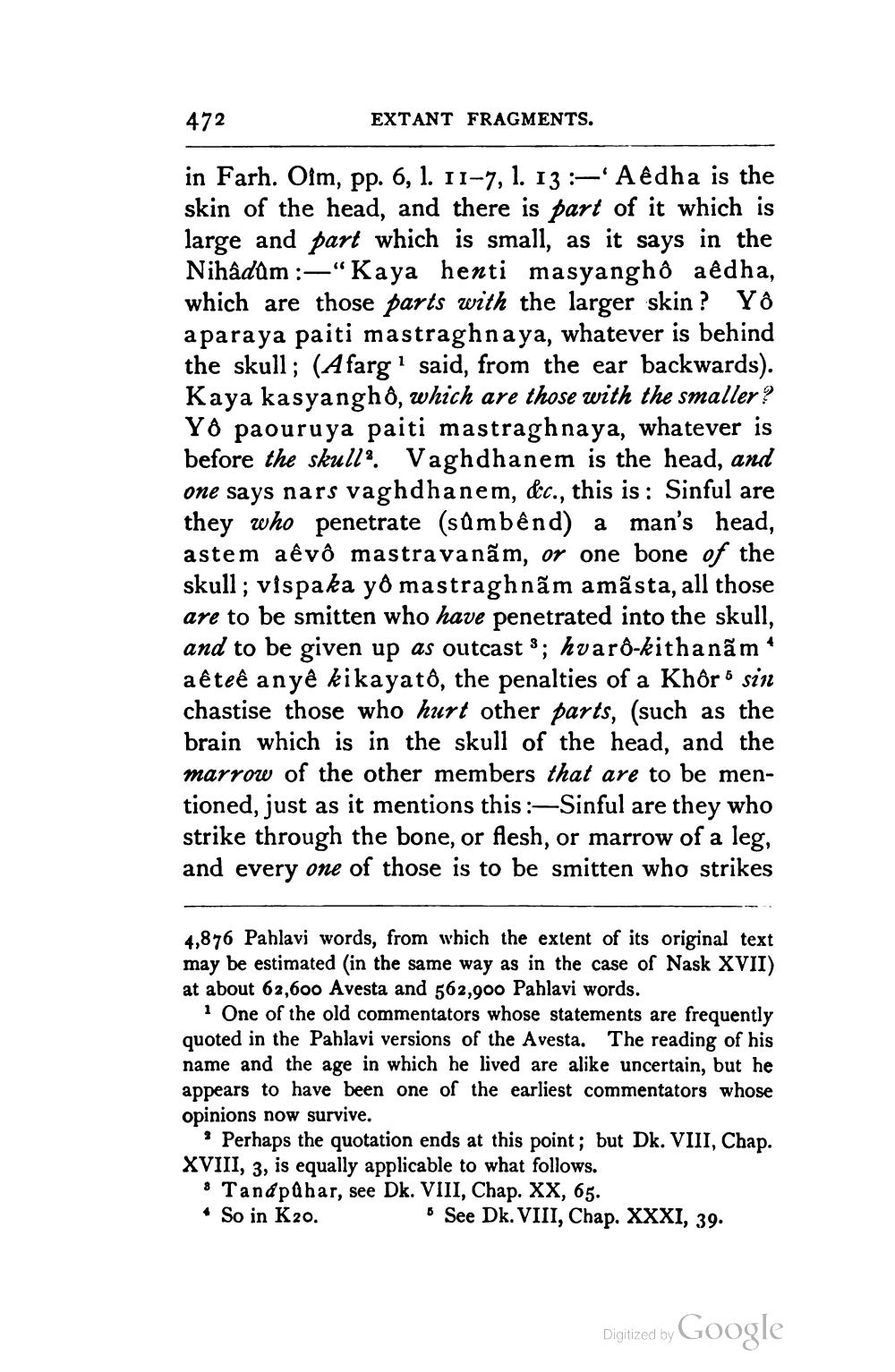________________
472
EXTANT FRAGMENTS.
in Farh. Olm, pp. 6, 1. 11-7, 1. 13:—'Aédha is the skin of the head, and there is part of it which is large and part which is small, as it says in the Nihâdum :—“Kaya henti masyanghô aêdha, which are those parts with the larger skin ? Yô aparaya paiti mastraghnaya, whatever is behind the skull; (Afarg said, from the ear backwards). Kaya kasyanghô, which are those with the smaller ? Yo paouruya paiti mastraghnaya, whatever is before the skulla. Vaghdhanem is the head, and one says nars vaghdhanem, &c., this is : Sinful are they who penetrate (sambênd) a man's head, astem aêvô mastra vanãm, or one bone of the skull; vispaka yô mastraghnãm amãsta, all those are to be smitten who have penetrated into the skull, and to be given up as outcast 3; hvaró-kithanãm * aêteê a nyê kikayatô, the penalties of a Khôr 6 sin chastise those who hurt other parts, (such as the brain which is in the skull of the head, and the marrow of the other members that are to be mentioned, just as it mentions this :-Sinful are they who strike through the bone, or fesh, or marrow of a leg, and every one of those is to be smitten who strikes
4,876 Pahlavi words, from which the extent of its original text may be estimated (in the same way as in the case of Nask XVII) at about 62,600 Avesta and 562,900 Pahlavi words.
1 One of the old commentators whose statements are frequently quoted in the Pahlavi versions of the Avesta. The reading of his name and the age in which he lived are alike uncertain, but he appears to have been one of the earliest commentators whose opinions now survive.
? Perhaps the quotation ends at this point; but Dk. VIII, Chap. XVIII, 3, is equally applicable to what follows.
8 Tandpahar, see Dk. VIII, Chap. XX, 65. • So in K2o.
• See Dk. VIII, Chap. XXXI, 39.
Digitized by Google




